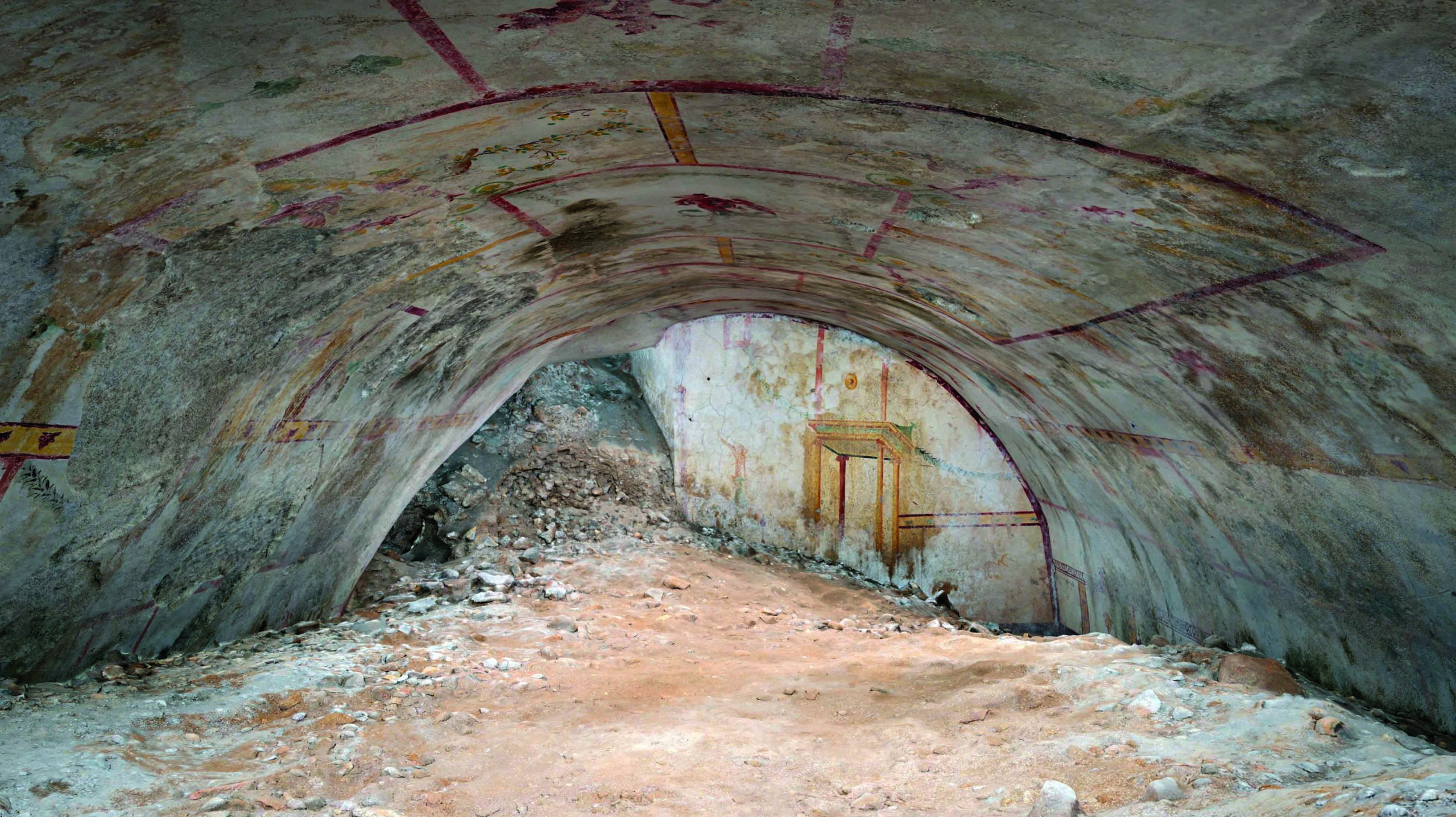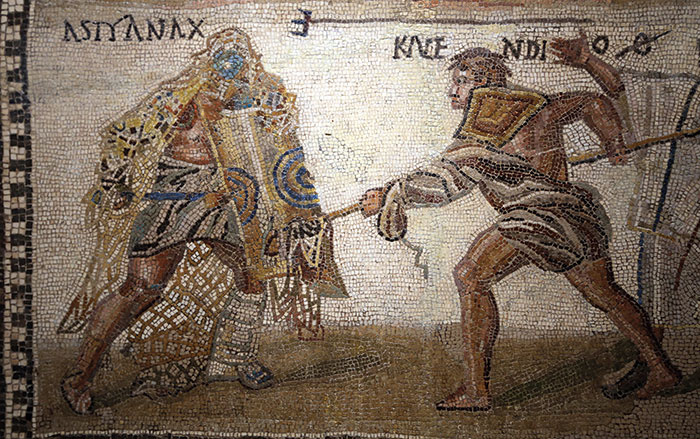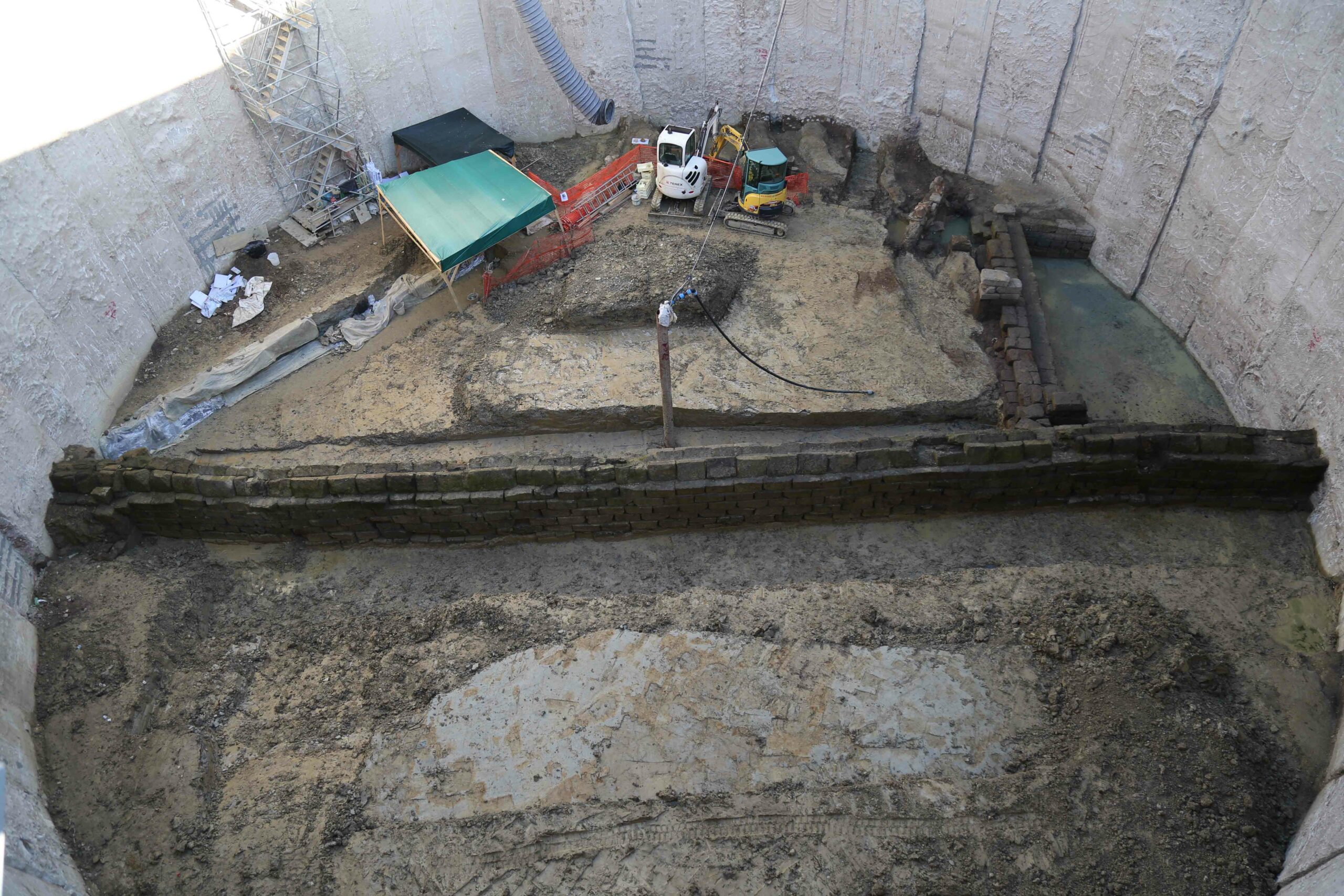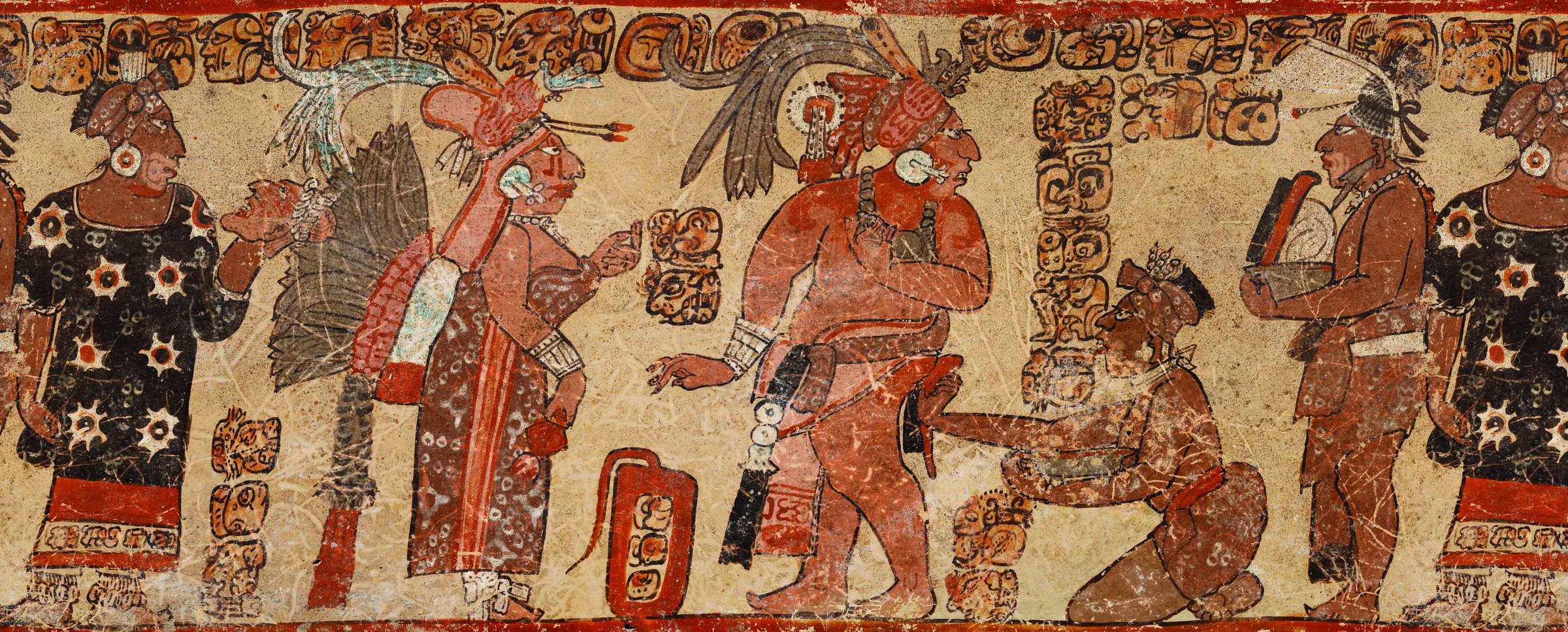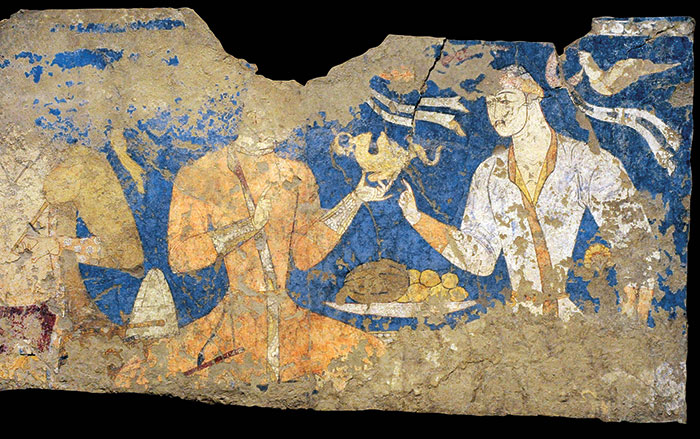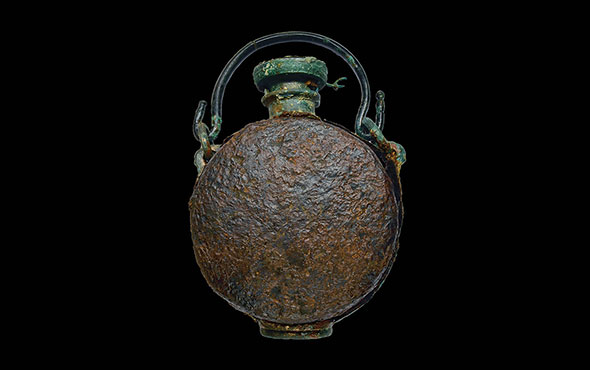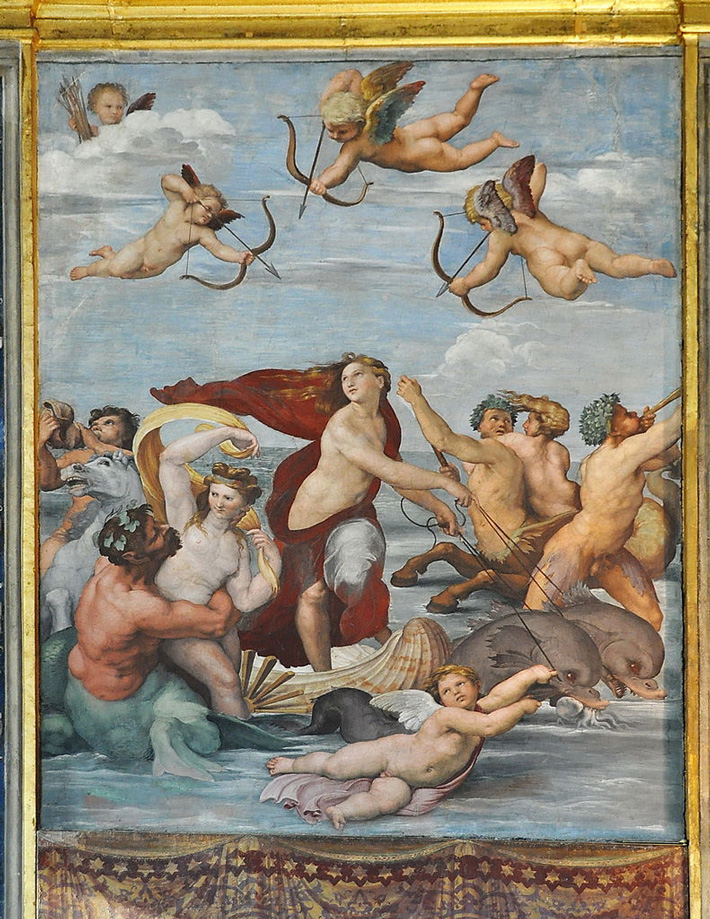
ROME, ITALY—ANSA reports that Antonio Sgamellotti of the Lincei Academy and his colleagues analyzed the chemical composition of the blue pigment in the sea and sky of Triumph of Galatea, a fresco completed by the artist Raphael in 1514 in a building then known as the Palazzo Chigi. Sgamellotti said the researchers found evidence of “Egyptian blue,” a pigment thought to have been replaced after the fall of the Roman Empire with the use of lapis lazuli. Raphael may have chosen to recreate the brilliant pigment for this depiction of the heroine of a Greek myth because of his interest in the ancient world, Sgamellotti explained. In the painting, the Nereid Galatea is shown riding in a shell pulled by two dolphins. To read about another identification of Egyptian blue in a Roman-era painting, go to "Hidden Blues."


